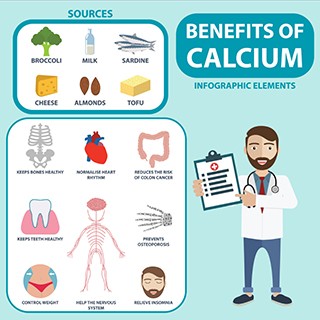Teenagers
Teenagers
As with every other life stage, the teenage years are a period in a person’s life that include many physical changes. Around this time, teens go through a growth spurt and have increased nutrient needs. In addition, teens face other challenges that can affect their nutritional status.
Nutritional Needs of Teenagers: Total nutrient needs are higher during teenage years than any other time in the lifecycle. However, intakes of US teens show that many consume inadequate amounts of vitamins and minerals. This seems to be more prevalent in girls than in boys.
Calories : Teenagers need more calories than children and adults. A teenage boy needs approximately 3,100 calories and a teenage girl needs about 2,300. Calories provide the energy needed to complete daily physical and mental activities.
Protein: The protein needs of teens are influenced by the amount of protein required to retain their muscle mass. They also need additional protein to support the new muscle mass during the adolescent growth spurt.
Fiber: Most teenagers do not get adequate amounts of fiber in their diet. Teens often consume fast food and sugar- containing beverages and don’t eat food providing adequate fiber.
Fat: Most teenagers consume enough fat. The recommendations for teens is no more than 30 percent of calories from fat, and no more than 10 percent of calories from saturated fat.
Iron: Iron is important for transporting oxygen in the bloodstream and for preventing anemia. The need for iron increases during the teen growth spurt. It is needed to support increased blood supply and muscle mass. Girls need higher amounts of iron than boys. Iron is found in red meat, pork, poultry, seafood, beans, dark green leafy vegetables, dried fruit and fortified foods.
Zinc: Zinc is important in teenage years because of its role in growth. Zinc is found in red meats, shellfish, whole grains, and other fortified foods.

Calcium: Calcium needs during teenage years are greater than they are in childhood and adulthood. This is because of the large increase in skeletal growth. About 45 percent of peak bone mass is attained during teenage years. Adequate calcium intake is important for dense bone mass and preventing against osteoporosis later in life. Calcium can be found in dairy, collard greens, sardines with bones and some foods fortified with calcium.
Teenagers are faced with many changes as they go through this life stage. A lot of these changes affect good nutrition. Some common problems teenagers face affect their nutrition status and their health.

Eating Habits: The eating habits of teenagers are erratic. They tend to be independent and make their own food choices. They like to spend time with friends and fast foods are very convenient. They have increased access to vending machines and less parental supervision. This could lead to increase in fat and sugar in their diet.
Obesity: Obesity rates in teenagers have increased. Teens are often less physically active. Obese teens have increased chances of diabetes and high blood pressure and other chronic illnesses.
Eating Disorders: Many teens are worried about their weight and their appearance. Eating disorders like anorexia and bulimia usually begin in teenage years and are more common in girls. Excessive worrying about dieting and thinness leading to excessive weight loss are clues that someone has this disorder. It is important to recognize the warning signs. Some warning signs are:
- Significant weight loss
- Distorted body image -- feeling fat
- Fear of gaining weight
- Compulsive exercising
- Constantly thinking and talking about calories
- Eating and then taking laxatives or vomiting after the meal
Physical Activity : Playing sports and doing other physical activity take a lot of energy from the body. Use food as fuel to make sure that you are able to safely complete the physical activities that interest you the most. These suggestions from the American Heart Association are a good starting point for creating a fueling routine that will help you stay safe while staying physically active..


 TARRANT COUNTY, TX
TARRANT COUNTY, TX

 Chronic Disease Prevention
Chronic Disease Prevention

